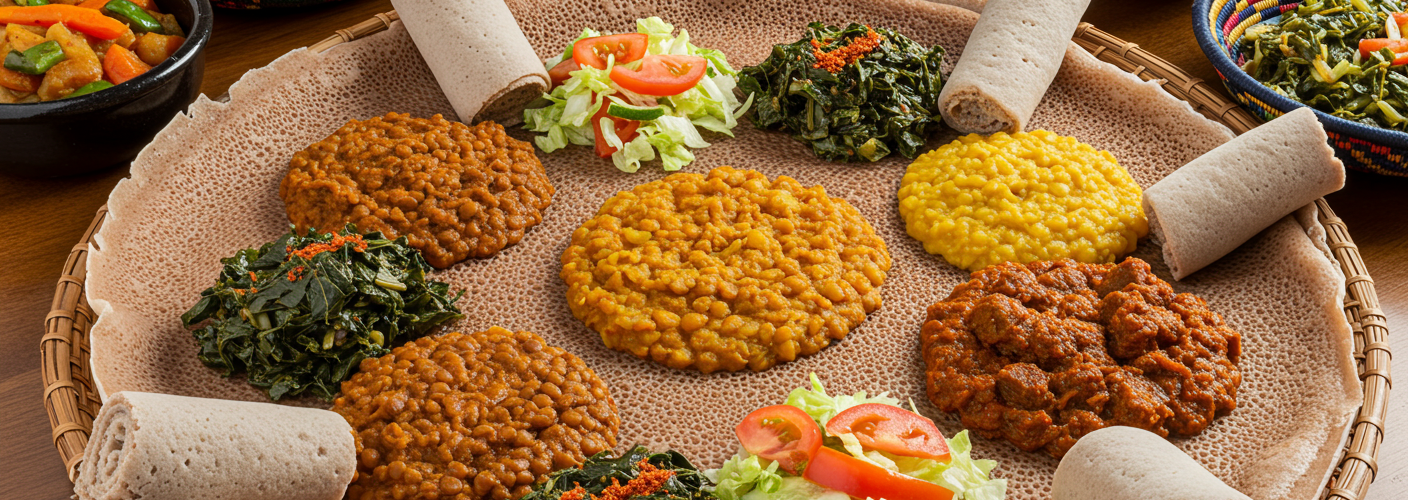Ethiopian food is a vibrant tapestry woven from the rich cultural heritage of one of the oldest nations in the world. With its unique flavors, communal dining experience, and diverse ingredients, Ethiopian cuisine offers something special for both novice foodies and seasoned gourmands. Let’s take a closer look at this exquisite culinary tradition.
At the heart of Ethiopian cuisine lies the distinctive staple known as injera. This sourdough flatbread is made from teff, a tiny grain that is packed with nutrients and gluten-free. Injera is more than just a side dish; it serves as both the plate and eating utensil. The spongy texture allows diners to scoop up various stews and dishes, making the meal a tactile and social experience.
The stews, or wot, are the stars of the Ethiopian dining table. They come in many varieties, catering to a wide range of tastes and dietary preferences. For instance, Doro Wot is a famous chicken stew that is marinated in a mixture of spices, showcasing the Ethiopian spice blend known as berbere. This robust blend typically includes chili pepper, garlic, ginger, and a medley of other spices, giving the stew its characteristic warmth and depth of flavor. For vegetarians, options like Shiro (a chickpea stew) and Misir Wot (a spicy lentil stew) provide satisfying, rich alternatives that reflect the culinary creativity found throughout Ethiopian kitchens.
Another remarkable aspect of Ethiopian food is its emphasis on communal dining. Meals are often served on a large platter, with injera acting as both a base and a utensil. Families and friends gather around and share from the same platter, creating a sense of togetherness and community that is central to Ethiopian culture. This practice reinforces bonds and fosters a spirit of hospitality, making meals a delightful social event.
Ethiopian cuisine also places a strong emphasis on fresh ingredients. Many households grow their own vegetables and herbs, embracing a farm-to-table philosophy that enhances the flavors of their dishes. Staples such as tomatoes, onions, garlic, and greens are commonly used, adding freshness and brightness to every meal. The incorporation of these ingredients not only contributes to the vibrant colors of the dishes but also ensures a variety of nutrients that are essential to a balanced diet.
For those with a sweet tooth, Ethiopian desserts provide a sweet finishing touch. One popular choice is baklava, a rich pastry made with layers of phyllo dough and nuts, drizzled with honey. Similarly, Ethiopian coffee ceremonies are revered, resulting in freshly brewed coffee that is both a social ritual and a sensory delight. Coffee is often served alongside popcorn or homemade pastries, adding a delightful conclusion to a flavorful meal.
In conclusion, Ethiopian food represents a celebration of culture and community, marked by its rich flavors and beautiful presentation. Whether you’re dining in a traditional restaurant or enjoying a home-cooked meal, the experience of savoring Ethiopian cuisine is unparalleled. It invites you not only to taste but also to connect—through shared dishes, stories, and the genuine warmth of hospitality that embodies Ethiopian culture. So, gather your friends and family, grab some injera, and embark on a delightful journey through the rich and delicious world of Ethiopian food.




Add comment